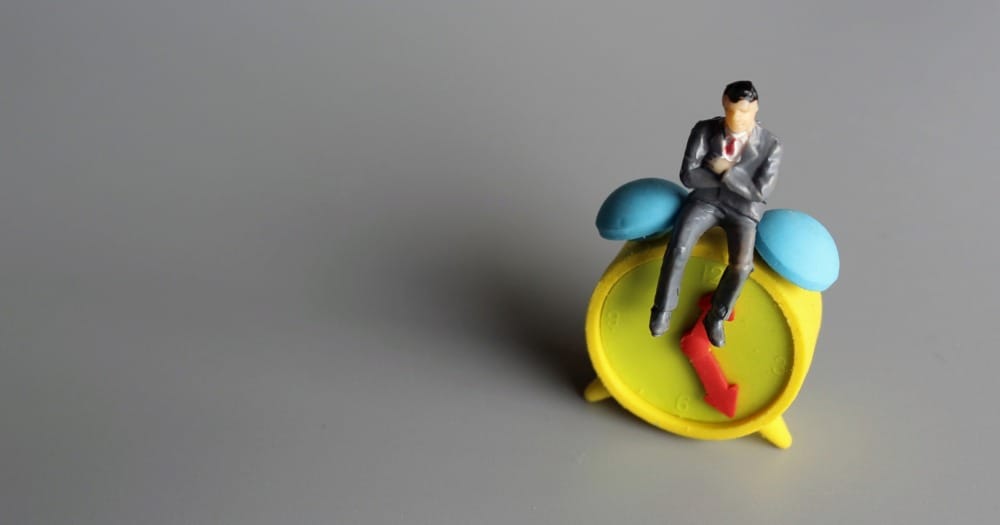Today is my one-year anniversary of working at Ideba. Reflecting on this past year, one striking lesson stands out: the art of balancing distractions – work-related or otherwise – to produce high-quality work and deliver even higher-quality presentations that leave your audience (clients) wanting more. At this very moment, I am working on two laptops and one monitor, hosting a combined total of 26 open tabs. Teams and Zoom messages can pop up on your screen at any moment and emails drop into your inbox begging for your attention. And then there’s your phone, probably sitting on the corner of your desk, that has as many apps as there are hours in the day. I start working on one task only to be interrupted by a Teams message that lands me 50 minutes down a rabbit hole, only to forget where I left off working on the original task. One study found that it took an average of 23 minutes and 15 seconds to fully return to a task after being interrupted. If you get just 5 Zoom messages a day, that means you would spend almost a quarter of your day returning to tasks. Regardless, these messages and emails are a significant part of many jobs now.
The difficulty with staying on task or returning to tasks could be due to our declining attention spans. There is research suggesting that our attention spans are shrinking due to the rapid evolution of technology. In fact, there is a Time article titled, “You Now Have a Shorter Attention Span Than a Goldfish.” Sadly, it’s not an exaggeration – in 2000, our attention spans averaged 13 seconds, but by 2013, it had dwindled to a mere 8 seconds…a goldfish’s attention span was 9 seconds. We are inundated and captivated by quick content – catchy headlines, TikToks, YouTube Shorts, Instagram Reels, and the list goes on.
Amidst all these distractions and demands, how can we maintain our productivity when it’s essential? How do we deliver presentations that captivate the audience’s attention while overcoming competing demands? Our attention spans have been shrinking, but our workloads have been growing. Most individuals are responsible for numerous projects– which has led to the term, attention economy. Created by Nobel Laureate Herbert Simon, attention economy suggests that a surplus of information creates a shortage of attention. Various projects and tasks are demanding our attention, and we only have a limited amount of attention that we can give at any one time.
Attention to detail is still important, even when your attention is diverted in 12 different directions. Even the smallest details matter (e.g., spelling a client’s name correctly in an email, fixing grammatical mistakes, etc.). That increases tenfold when putting together a presentation or report. What might seem like small details can truly make a big difference in how a presentation is viewed and how the content is perceived.
In my year at Ideba, my skilled colleagues taught me how to create and deliver top-tier presentations. Below are seven tips on how to navigate the attention span minefield, from my experience, and produce the highest quality work:
- Focus on limiting distractions – put your phone in a different room (if/when you’re able), instead of face down on your desk. Even having your phone in your line of sight can serve as a distraction.
- Block out time on your calendar for heads-down work and give your team a heads-up, to limit potentially avoidable distractions.
- Test out the Pomodoro Technique – 25-minute working intervals broken up by 5-minute breaks. If messages or emails can wait for 25-30 minutes, turn off notifications on apps like Zoom, Teams, and Slack.
- Take a few extra minutes to spellcheck an email (double check the spelling of names – no one likes it when their name is misspelled).
- Send a presentation or final deliverable to a trusted colleague to proofread and provide feedback on the content before it is shared with a client.
- When building a presentation, focus on attention-grabbing visuals like charts, pop-out statistics, and quotes.
- Makes presentations clear-cut and to the point. Avoid slides with heavy, wordy material. Use your talk track or the notes section in PowerPoint to add color to the information on the slide.
In this attention economy, the quicker information can be consumed, the greater the impact and the more successful the presentation. However, visual information is only half of it. You need to be able to capture the audience’s attention. With numerous tasks competing for everyone’s attention, presentations must draw in the audience for them to hear the results – and this can take time to craft. To navigate this attention span minefield, businesses, and their employees must adapt their internal and external strategies to capture and retain the ever-dwindling resource of attention. Our attention spans might be on the decline, but our quality of work doesn’t have to be. I’m curious about what techniques you’ve incorporated to limit distractions and continue producing high-quality work. Drop a comment or email me at kristenh@idebamarketing.com
Kristen Higgins – Research Manager






